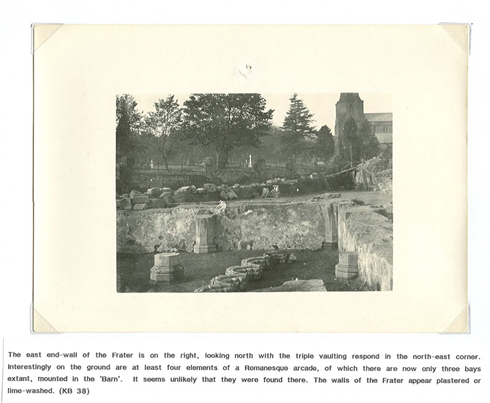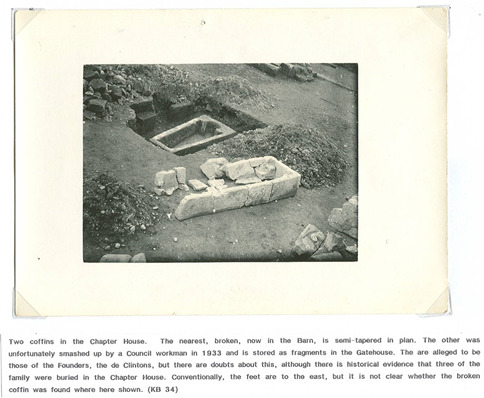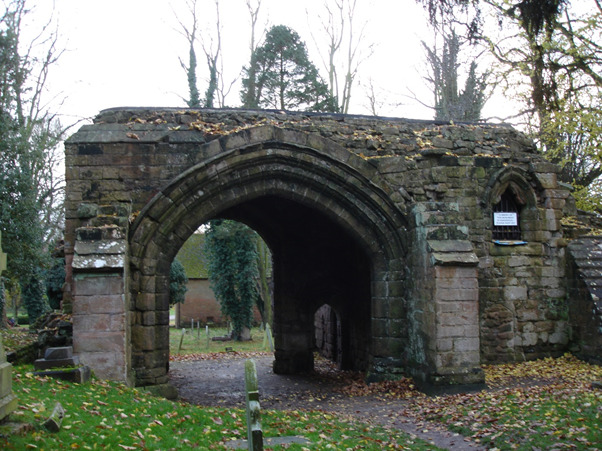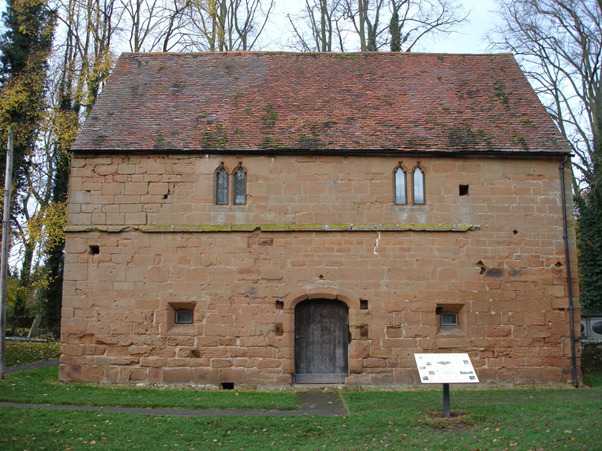This Augustinian convent was originally founded as a Priory in 1119 by Geoffrey de Clinton (also founder of Kenilworth Castle) on land granted to him by King Henry I.
Although Augustinian Canons lived in communal surroundings they were not Monks; they were all ordained Priests and as such sometimes had a role to play within the local community. They provided/recommended Priests for parish churches within their jurisdiction; administered to the sick and dying; gave alms to the poor and, in some instances, provided educational facilities for the sons of local land owners. Before the foundation of the parish church, local people would have been allowed to enter the nave of the Priory Church to hear mass. The Prior would have had a secular as well as a spiritual role to perform on behalf of the Priory’s founder and benefactor. If the Lord of Kenilworth Castle was in residence then the Prior would from time to time be expected to entertain him at the Priory. If the Lord was away then the Prior would act as his local land agent, ensuring that taxes and tithes were collected on time and maintaining discipline amongst the local people. Hospitality would also require to be offered to travellers and, those of high rank would expect to be entertained by the Prior.
The lives of those at the castle and Priory were inextricable linked for over 400 years.
As Kenilworth Castle grew and prospered so did the Priory but in 1266 when King Henry III laid siege to the castle where the surviving rebels from the battle of Evesham had taken refuge the year before, the Prior was expected to help provide supplies for his Royal patron’s vast army and accommodation for some very important people including the King, the Queen, the Archbishops of Canterbury and York and the Papal Legate. When the rebels within the castle finally surrendered to King Henry after almost six months the Priory was completely impoverished. It took years for the castle, the priory and the county to recover from the ravages of the siege. In the latter part of the 14thC during the patronage of John of Gaunt, 2nd Duke of Lancaster, the Priory acquired a new two story Gatehouse and the Presbytery at the eastern end of the Church was extended making the entire church some 282 feet long, almost twice the length of the then neighbouring parish church. Major works were also underway at the castle during this time when the Duke of Lancaster was often abroad on campaign. He therefore designated Prior Charleton to act as his Clerk of Works to oversee these very important building projects – further demonstrating the continuing close relationship between castle and priory.
By 1447 Kenilworth Priory had become one of the largest and wealthiest Augustinian houses in the Midlands and had the distinction of being raised to Abbey status by the then Pope Eugene IV.
The Abbey continued to prosper until the 1530s when King Henry VIII broke with Rome and declared himself head of the Church in England. In less than a decade every monastic house in the country had been suppressed and many destroyed. Kenilworth Abbey closed its doors for the last time on the 13th April 1538 when Abbot Simon Jeykes signed the instrument of surrender. Everything of value was removed by the King’s Commissioners and many of the buildings dismantled. Some of the fine sandstone would have been sold; some was used in other buildings in and around Kenilworth, including the Earl of Leicester’s major works at Kenilworth Castle during the late 1560s and early 70s. The west door of St. Nicholas’ Parish Church is a composite of Romanesque sculpture work removed from the Abbey and reset into a Renaissance frame to create a very impressive new entrance.
By the 17thC, much of the land where this magnificent abbey once stood had been turned over to pasture – animals now grazed amongst the ruins of the abbey where the Canons once walked and prayed.
There are very few standing remains now of the Abbey buildings – fragments of the west door of the church, the crossing piers and north transept have survived. Part of the wall of the north cloister alley has been rebuilt using decorative stones rescued from the ruins, and a fragment of the Chapter House has also survived above ground. Extensive excavations were carried out in the 1920s but were eventually re-covered to protect the archaeology.
The only two buildings of significance to have survived are the 14thC Gatehouse (ground floor only) and what may have been a 14thC Priory Hall which, in the 19thC in a semi derelict state, had a lean-to cowshed attached and subsequently became known locally as ‘the barn’.
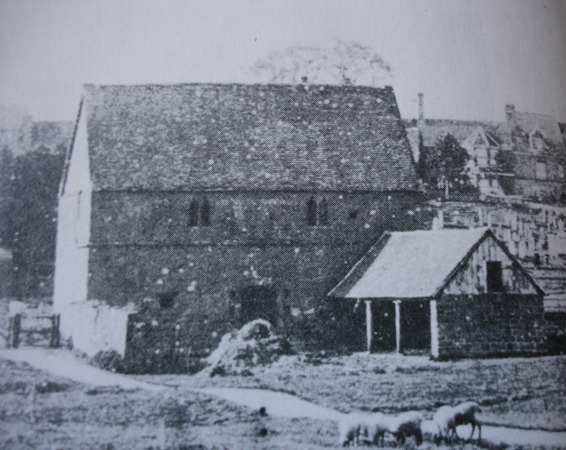
This building now houses a Museum and Heritage Centre. On the ground floor is an interpretation of the monastic buildings and their history, and a selection of decorative sculptured stones found during the excavations. On the upper floor is an eclectic mix of artefacts and photographs charting Kenilworth’s history from the Bronze Age to modern times.
The Abbey Museum and Heritage Centre is normally open every Sunday and Bank Holiday Monday afternoon from 2.30 to 4.30pm between Easter and mid-September. Entrance is free of charge. Public guided walks of the Abbey ruins take place in July during the Festival of Archaeology and in September in support of Heritage Open Days. At other times guided walks and a private viewing of the museum may be booked for small groups by prior arrangement. The Museum is run entirely by volunteers, mainly from the Kenilworth History & Archaeology Society. New volunteers are always very welcome – please feel free to contact us [wpml_mailto email=”contact@khas.co.uk”]via email[/wpml_mailto] if you are interested in helping.
Jan Cooper
